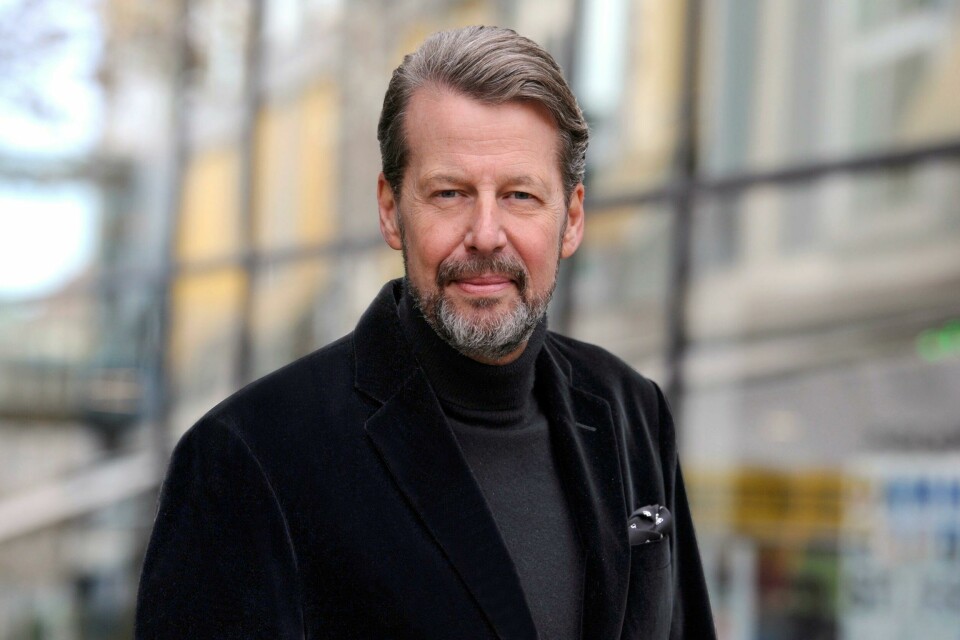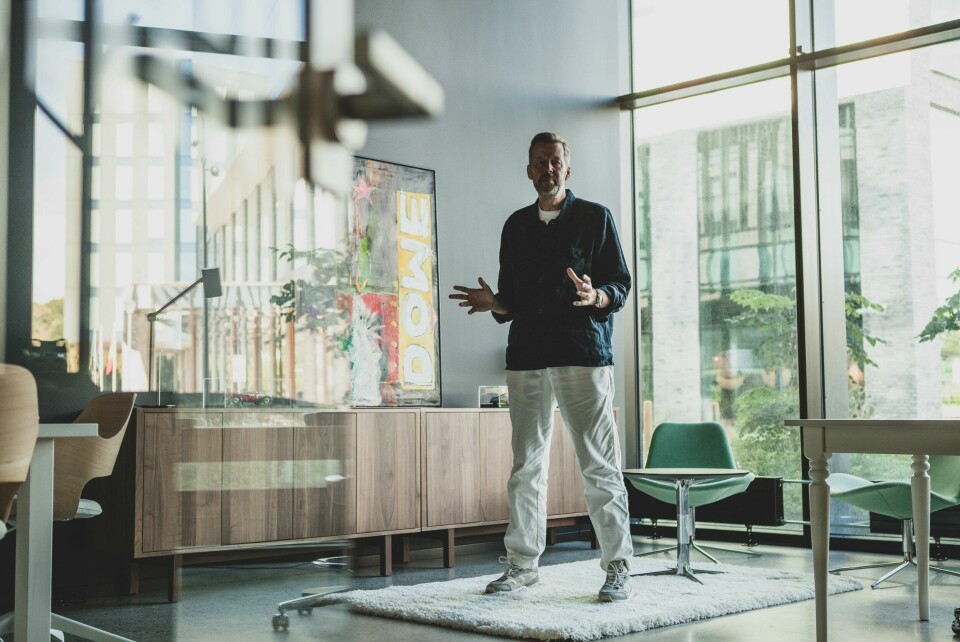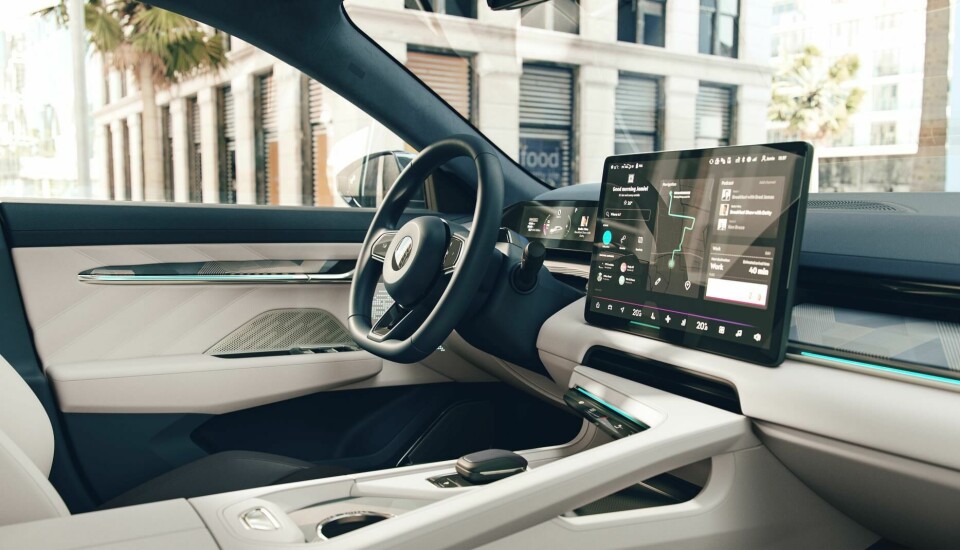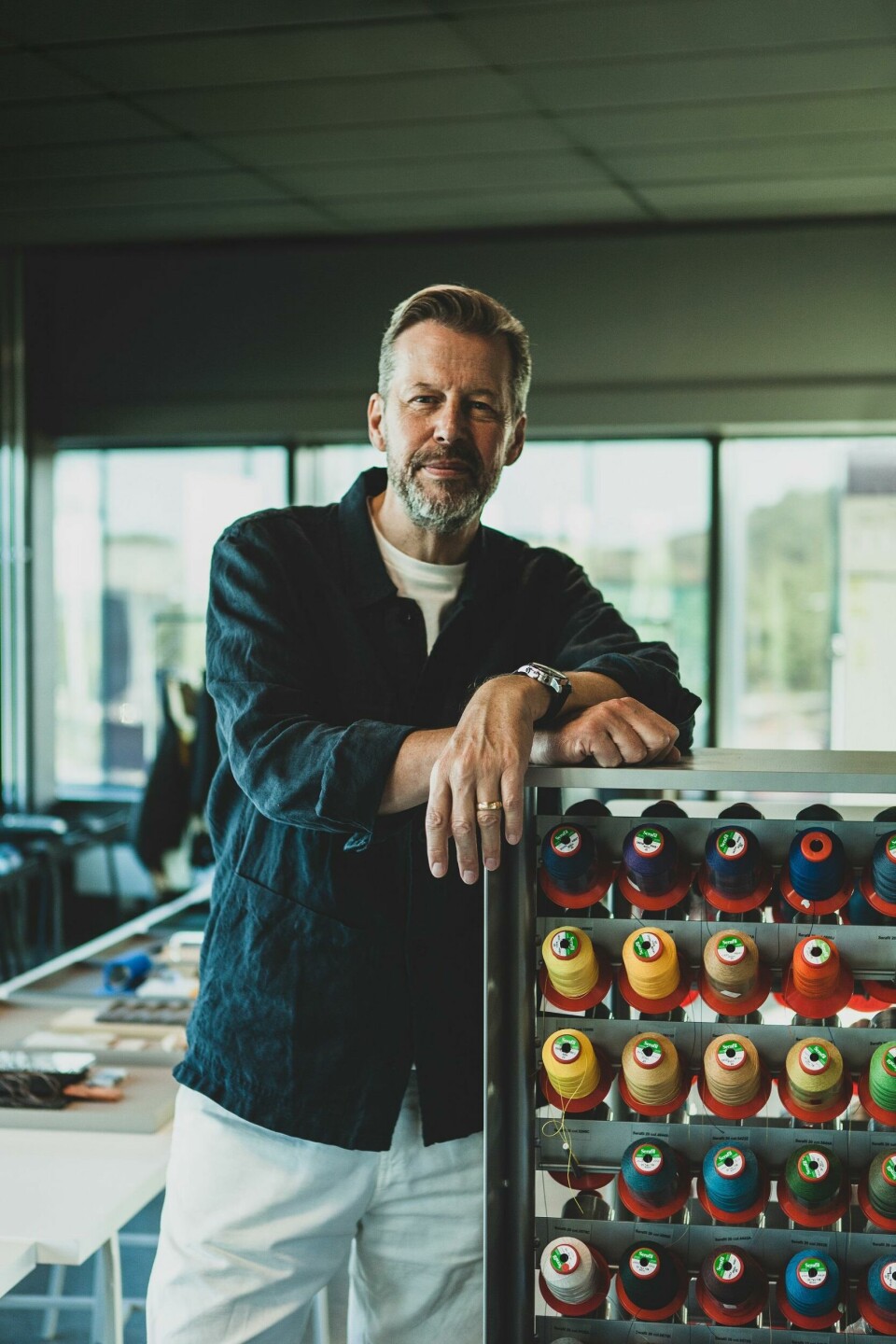
Stefan Sielaff on the evolution of Zeekr design
VP of global Geely design, Stefan Sielaff, discusses Zeekr’s pending split from its parent company and how the new brand is looking to carve its own identity moving forward
In October 2022, Geely revealed plans to spin out Zeekr from the wider group to operate as an independent company. Having leveraged the platform used by sister brand Lynk & Co from launch, one of the challenges has been creating a separate identity for Zeekr but that should soon change.
While the brand is unlikely to diverge massively from the look and feel it has already been building, the separation from Geely is sure to create new opportunities moving forward. To discuss the implications for the design team and get a sense of how future vehicles may look, we sat down with Geely design boss Stefan Sielaff, who also heads up design at Zeekr. Here he talks design influences, cultural diversity and the new age of luxury.
Car Design News: Geely is a Chinese brand of course but, here in the heart of Gothenburg, does it feel that way?
Stefan Sielaff: Based on where we are in Europe, just a couple of hours away from London and so on, we are able to exchange within Europe very quickly. It could sound like we are sat over here in our Scandinavian ivory tower and just throwing some stuff over the fence to China, but we have daily exchanges with the project managers in China and we are super connected. We have a weekly exchange with the CEO, virtual reality reviews and there is an extremely high frequency of interaction between us. We feel that we are almost in China and acting together. We feel every day as though we are part of the Chinese community.

CDN: You’ve spent time with brands like Audi, Mercedes, Bentley and other European carmakers during your career. Would you say there are any nuances between the way the team approaches design at Geely? Or is the basic way of working universal regardless of brand?
SS: It is a complex question and it always depends on where a brand is in its level of development. When I started as a young student at Audi, for example, it was still growing – it only had models like the Audi 80 and Audi 100 – so the Audi story was only really beginning. At that time it was a sleeves up, down to earth feeling. We acted like a family, because the company was not as big as it is today. So the size of the company always gives you the chance to act more in a family feeling where it is not yet so heavily developed and everybody has the same dream – a little bit like Zeekr is today.
CDN: Are there any obvious benefits to this ‘tight knit’ approach you might see at a new brand?
SS: As things get bigger and bigger, companies become less personal and there becomes a bit of a hierarchy. Conversely, I enjoy more of a flat hierarchy over here. I am able to have daily exchanges with team members and they personally get to present their work to me. There is more of a direct access and fewer levels.
We do not need to reinvent ourselves from scratch… It’s simply a matter of moving the pieces on the board
The general process of design is typically always the same, but the corporate culture can be very different. One thing for sure is size; I like to think of the comparison of working in a small kitchen at home versus a big canteen kitchen. Corporate culture is definitely a little bit different with every brand, although it’s not to say that one way is right and another way is wrong, it’s just different.
CDN: What might the pending split from Geely mean for Zeekr’s design department on a day-to-day basis – will it be all change or business as usual?
SS: I think the design department will experience no change from the day-to-day creative work, which will carry on without any disruption. When it comes to the demands of top management and corporate issues, this will need to be dealt with but it has been handled by many other companies in the past and it is no big miracle. It is almost a pattern that happens to different brands and design departments. We do not need to reinvent ourselves from scratch – we can follow the same route that others have taken. It’s simply a matter of moving the pieces on the board and saying: “this is now under Geely Auto Group, this is still Zeekr, this is Lynk & Co design.”
CDN: Operationally it sounds like smooth sailing, but conceptually, you’re still trying to carve out a new identity for Zeekr moving forward – or at least evolve it?
SS: It’s clear that we have to separate ourselves from our genetic origin, which was and is Lynk & Co, in a way that is digestible for the customer. We will have to start to walk on our own feet step-by-step so that customers are able to follow our acting and thinking. Zeekr has to invent its own design identity and philosophy and manoeuvre into a bit of a different direction. The design philosophies of Zeekr and Lynk & Co will still continue, but separately.
CDN: How would you describe the positioning of Zeekr from a design perspective?
SS: Zeekr is supposed to be quite high up in the market in terms of premium and luxury, whereas Lynk & Co is a little bit lower on that spectrum, broadly speaking. So this presents a good possibility to separate the two design philosophies from each other to an extent.
When everything is structured and has strategy, design becomes stiff and inflexible
CDN: In a way, this is a question of how design can build the Zeekr brand. Where do you begin to start with that process?
SS: We have a chance to define the values of the Zeekr brand first of all, and there are two statements that are important for its future: one is being human centric, and the other is about being technology driven. Both of these ideologies are pushing the design philosophy forward.
CDN: How are you finding this challenge personally? Does it remind you of your time at the early days of Audi when it too was building itself up?
SS: It is almost like coming full circle in my professional life, I guess. I am back into this family feeling of having a more of less white canvas where we can create everything from the brand and design philosophy, marketing and sales, merchandising, showrooms and even how we want our motorshow presence to feel. It is very satisfying because you can create everything from scratch.
It is of course a little more unstructured, which I quite like as it feels wild and raw. When everything is structured and has strategy, design becomes stiff and inflexible. What I experience at he moment is very open minded and flexible; sometimes mistakes happen but then it is a learning experience and you correct it and do it better. That is the case when we create things super fast, which is for me very satisfying as I will experience the result of the work very quickly.
CDN: So you’re a fan of organised chaos?
SS: Chaos is maybe the wrong word. It is more a kind of creative atelier, which is always a little bit wild. You can also think about a chef starting to develop new meals: you need to experiment and that always comes with stuff flying around the kitchen, so it is not chaos but it is an experimental field where you trial and error things. When the recipe and structure is very clear, it becomes less exciting. When things are controlled you lose the creative flair and you lose the design challenge.
Not many people have craftsmanship on their radar. It is another element of sustainability, creating something that is appreciated
CDN: Zeekr is positioning for more of a premium market. How are the ideals of luxury evolving in your view and how might this be reflected in Zeekr design moving forward?
SS: I totally agree. The understanding of luxury in the sense of opulence like it was in the past is definitely not what we are aiming for. Luxury still goes beyond the daily necessities, but the definition of luxury for the younger generations is something extremely different not only now but in future too. It will play a big role in the digital world and how they transform the interiors of cars into lifestyle capsules with a kind of digital hub. That is maybe the defining factor of luxury of the future.

SS: Then when we look at more analogue sensations, I think very much it will be connected with the way we use materials, both in terms of sustainability in a very holistic way but also craftsmanship, which I think not many people have on their radar.
Being able to show that people with a certain lifeblood have crafted certain parts of the car, again maybe mostly in the interior, where you as a customer appreciate this perceived quality. It is almost another element of sustainability, creating something that it is not perceived as something consumable but something that is made by hand and appreciated.
We give the human being a strong place in the design process
SS: This should combine with a timeless design philosophy that means you can be happy with an object for many years. My first design boss always told us young designers that when you open the garage in ten years’ time, the result of your work should still be something customers are proud of. This is something not to underestimate.
CDN: With that in mind, I can imagine that CMF is becoming more integral to the overall design process?

SS: CMF, digital and user interaction are three departments that are on completely the same level as the classic interior and exterior design departments. We act as a team.
We are completely holistic together – there is no team that is more important than the other. It is like an orchestra that has to act on one level to make this symphony. If you have somebody in the team that is not considered important, then something is wrong.
CDN: What inspires you more generally as a designer? I see there is a nice painting on the wall next to you…
SS: This is actually one I made myself during an exercise we did at the Zeekr design studio. There is also a lovely painting I bought from a local art gallery in Gothenburg, and I loved it so much that I brought it into the office. Art is definitely an influence, along with fashion, product and furniture design of course.
SS: But at the same time, we stay connected with young team members and students at the Guanghzhou Academy of Fine Arts or the Royal College of Art where we have this open dialogue. It is a win-win for both sides. We see what these young colleagues are working on, what their dreams are, what their expectations and aspirations are, and they are happy to join us for an internship. It is very inspiring. You can also see that they are the future and they will be taking over from us one day. I benefit from having this community, it is very inspiring.
CDN: It must be important to have the right mix of skills and backgrounds around you in that case?
SS: Absolutely. Diversity is a key subject for us. From my perspective, everybody is also extremely young in this team – of course there are some experienced colleagues in this team supporting me – but we have a very young and diverse attitude overall in the team and we give the human being a strong place in the design process. I am very keen on having lots of individual expressions.


















